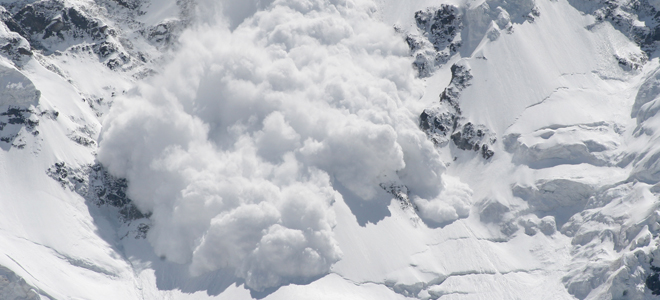Staying Alive in Avalanche Terrain
The number of avalanche fatalities is steadily rising, with over 40 avalanche fatalities per season in North America and even greater numbers in Europe, largely because more and more skiers and boarders head off into the backcountry.
Basic Rules
Our off-piste features should help you understand the essentials and ensure you have the necessary training, equipment, and experience before heading out in search of backcountry off-piste adventure. The most telling statistic is “lone skier, caught, buried and killed” so beware!
• Ski in groups, ideally with a qualified mountain guide.
• Appoint a group leader (and an alternate) to be responsible for making decisions in an emergency.
• Go one at a time and always think about who will do the rescue if something goes wrong.
• Be wary of cornices. Never walk up to the edge of a drop-off.
• Ski gently. Wider skis are better than narrow skis, and a snowboard is better yet.
• Remember the avalanche doesn’t know or care that you’re an expert skier or rider.
• Buy a transceiver (beacon), collapsible probe, and a shovel
• Owing and carry equipment is not good enough – practise using it.
• Carry a compass and inclinometer.
• Take an avalanche awareness class.
Avalanche fatalities
Since 1980, less than one percent of avalanche fatalities in North America have occurred within the ski area boundaries on open runs. The vast majority of incidents occur in the backcountry where no avalanche control is done, save to protect adjacent highways. But the number of avalanche fatalities in North America has risen steadily since the 1950’s with the 5-year average moving up from close to zero in the early 1950’s to around 28 deaths per annum in the U.S. and around 14 deaths in Canada.
The risk areas are different in Europe: a great deal of terrain within resort ski areas is designated off-piste without avalanche control and where avalanches are as likely to occur as they are in the backcountry; the sole consolation is that help may be relatively close at hand. Nevertheless, in a particularly rough 2005/6 season, over 50 people were killed by avalanches in France alone.
The increase over many years is largely attributable to a significant rise in the numbers of people heading off into the backcountry, assisted by improvements in equipment which make it easier for skiers, boarders, and snowmobilers to venture into avalanche terrain. What is also interesting is that although most victims are experienced and skilled, their avalanche skills invariably lag far behind their sports skills.
Avalanche victim profile
Eighty percent of all incidents in the U.S. happen in just five states Alaska, Colorado, Montana, Utah and Wyoming and in 90 percent of cases the avalanche is triggered by the victim or by someone in the victim’s party, but the biggest increase is over the border in British Columbia.
Most times when people venture into the backcountry nothing happens, again and again, except they gain in confidence and look forward to the next time. And since snow is stable about 95 percent of the time you get the 95 percent-success rate even if you know zero about avalanches. And in most cases, the average person has no idea they’ve even had a close call.
According to avalanche expert Bruce Tremper, “Almost all avalanche fatalities in North America involve recreationists, most notably snowmobilers, climbers, backcountry skiers, and boarders, in that order. Almost all are very skilled in their sport, male, fit, educated, intelligent, middle class, and between the ages of 18 and 40.” Does this sound like you?
Related Articles
Why Ski Off-Piste >
Avalanche Awareness >
Types of Avalanche >
Caught in an Avalanche >
Buried in an Avalanche >
Bruce Tremper and Mountaineers Books
Some passages in this section are extracted from ‘Staying Alive in Avalanche Terrain‘ by Bruce Tremper and reproduced with the kind permission of the publisher, The Mountaineers Books. The author Bruce Tremper Is the Director of the Forest Service Utah Avalanche Center and one of North America’s foremost experts on avalanches. He has appeared in news reports and documentaries produced by National Geographic, PBS, and Discovery Channel, among others.












